Pcomp Final Concept
07 Nov 2019 - Jake Sherwood
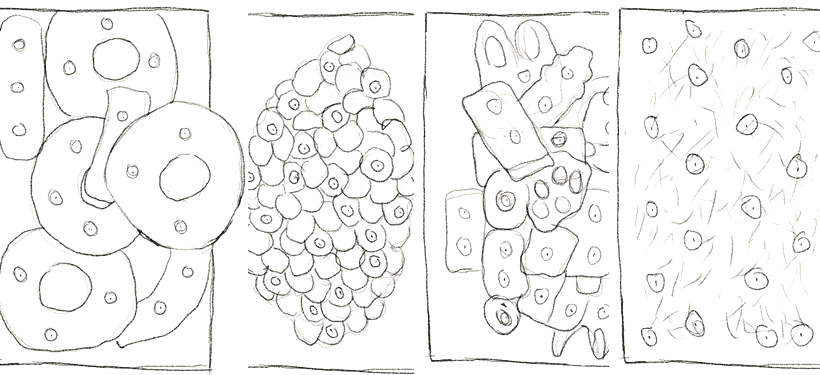 A Climate Change Sound Scape
A Climate Change Sound Scape
PCOMP Final Concept - A Climate Change Sound Scape
After feedback from last class, I explored my initial concept further.
I needed to answer, how to better convey the meaning of the piece to the viewer without the need for them to read a description.
I didn’t want to be overly literal and just have text or images that say or referred to climate change but agreed that without the viewer reading a description there was no way for them to understand that aspect.
To try to solidify my concept and come up with a way to better illustrate it, I decided I needed a better understanding of the data sets. How I was planning to use them and how they could inform a decision on how to better explain the underlying concept.
I also spoke with some other classmates, as well as David whom all gave great feed back and suggestions.
The initial data set I was planning to use (Representative Concentration Pathways) is actually more of a data set for climate change scenarios than for actual data related to a specific aspect of climate change.
These scenarios take into account many different driving forces including impacts (physical, ecological, and socioeconomic) and potential responses that are important to affecting climate change policy.
As stated on skepticalscience.com “The RCPs are not associated with unique socioeconomic assumptions or emissions scenarios but can result from different combinations of economic, technological, demographic, policy, and institutional futures”.
All of which boils down to various radiative forcing trajectories.
Per Wikipedia, “RADIATIVE FORCING is a measure of the influence a factor has in altering the balance of incoming and outgoing energy in the Earth-atmosphere system, measured in watts per square metre.””
All of this is great to better understand the data I want to work with. I even found the official RCP Database website. Which will let me compare and contrast many different data points from the various scenarios, export excel and vector charts and even compare historical data back to 1850.
But none of that helped me figure out a better way to convey the climate change aspect of the piece.
I decided to keep looking at other sources of data related to climate change and I found myself at the EPA.gov website.
They have a page detailing the Sources of Greenhouse Gas Emissions.
After reading through a few of the pages I decided this could be a good data set to inform some additional decisions.
If a take the top contributors to GHGs and use materials representative each as a basis for the sculptures it will be more understandable as a climate change piece.
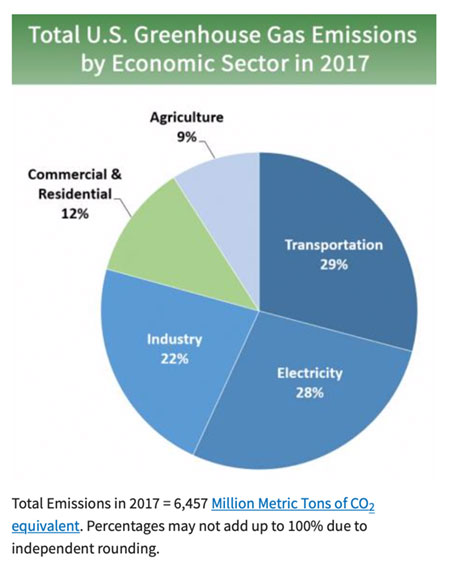 Top GHGs contributors by sector - from EPA.gov
Top GHGs contributors by sector - from EPA.gov
I decided on these 4 sectors to use in addition to the RCP scenario data.
1)Transportation - Contributes 29% of GHGs - representative material: tires / rubber (RCP 8.5 worst case)
2)Electricity - Contributes 28% of GHGs - representative material: coal (RCP 6 2nd worst case - “stabalization” scenario)
3)Industry - Contributes 22% of GHGs - representative material: onetime use plastics (RCP 4.5 2nd best case - “stabalization” scenario)
The forth case, would be a positive take. One of the uses of the RCP data is to forecast energy sources in the various scenarios.
In RCP 2.6 the “best case” scenario we would shift to 29.18% bioenergy. Bioenergy is a renewable and sustainable energy source created from natural, biological sources.
4)BioEnergy - 29.18% of Energy sources by 2100 - representative material: switchgrass. (RCP 2.6)
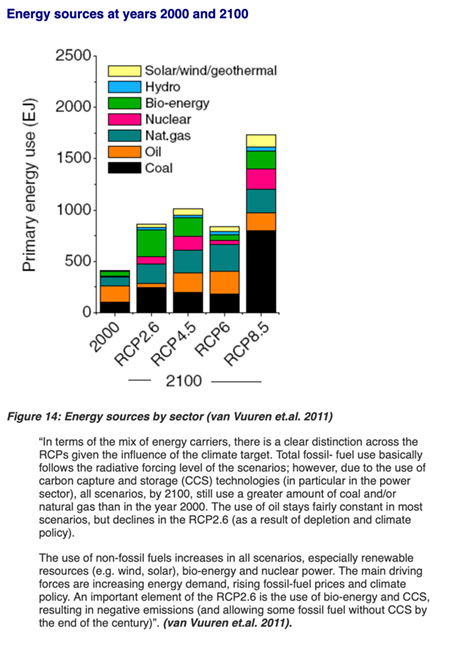 RCP forecasted Energy sources by 2100 - from skepticalscience.com
RCP forecasted Energy sources by 2100 - from skepticalscience.com
Sketches for the 4 soundscapes are below. I still need to work out the scale and materials but the concept is starting to become a bit clearer.
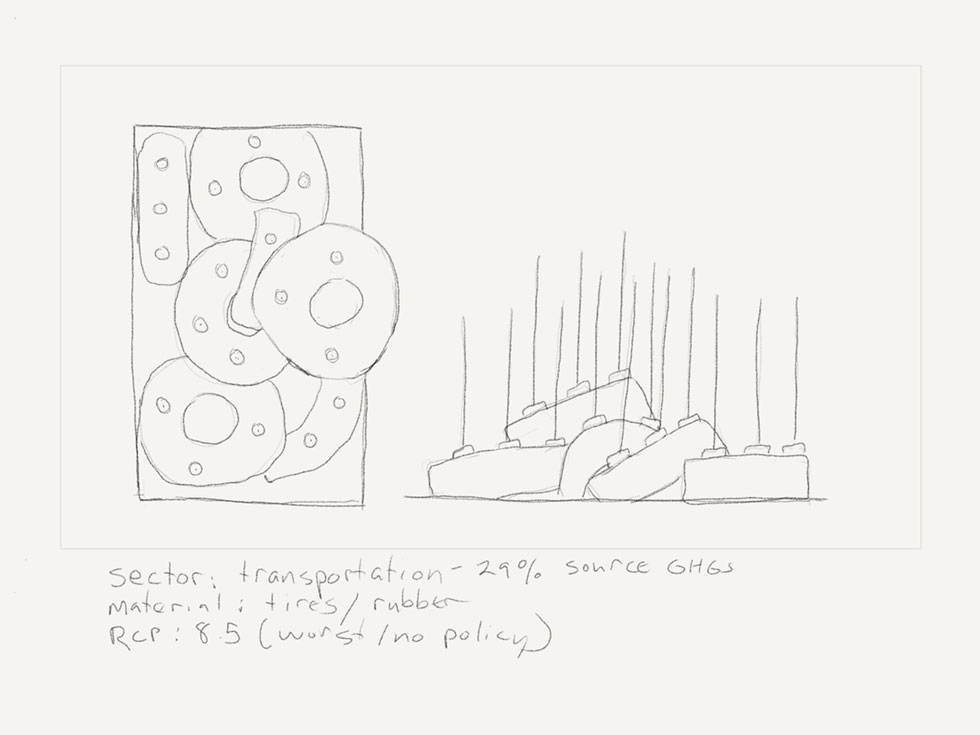 RCP 8 Climate Soundscape Sculpture
RCP 8 Climate Soundscape Sculpture
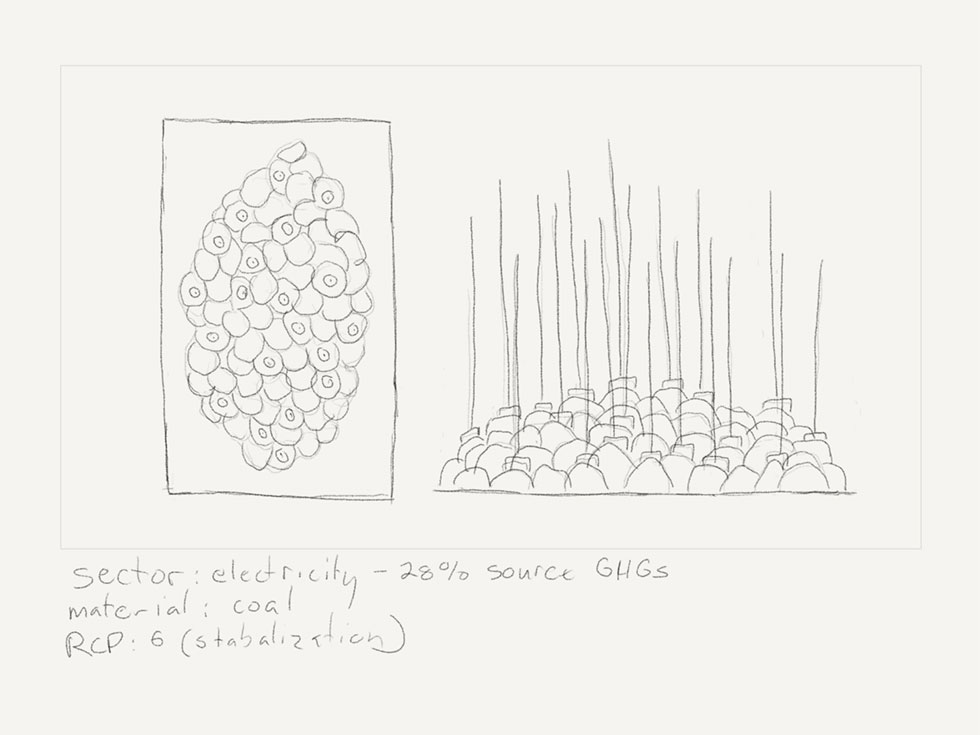 RCP 6 Climate Soundscape Sculpture
RCP 6 Climate Soundscape Sculpture
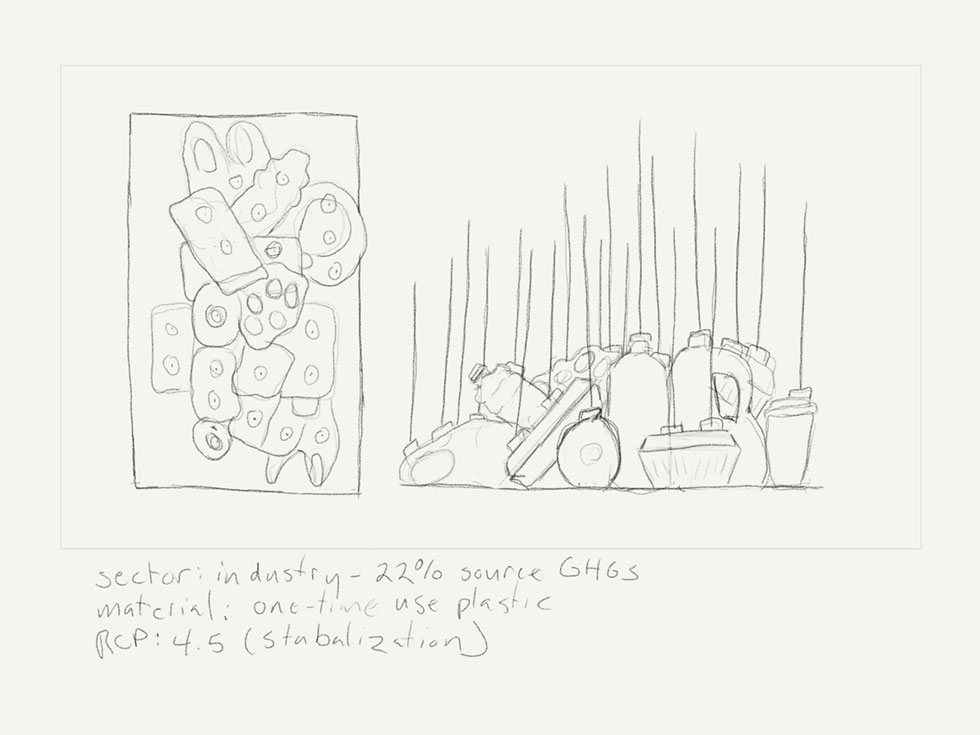 RCP 4.5 Climate Soundscape Sculpture
RCP 4.5 Climate Soundscape Sculpture
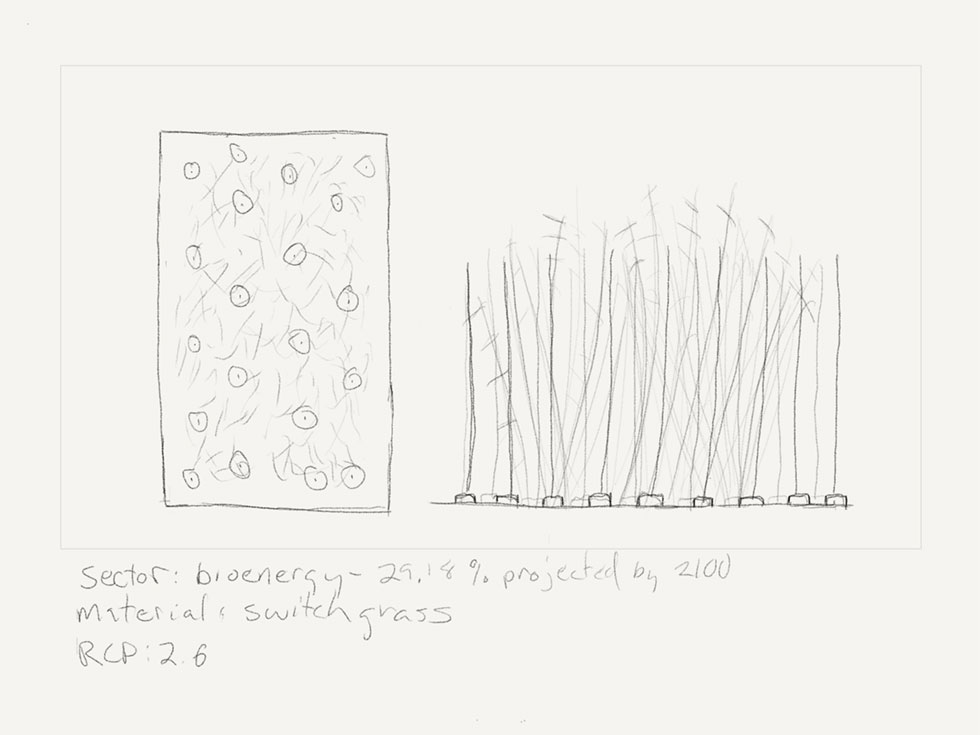 RCP 2.6 Climate Soundscape Sculpture
RCP 2.6 Climate Soundscape Sculpture
The first sketch I started with was the RCP 8 and if I actually build this out to scale using the length of approximately 3 tires as shown it will be about 8 feet long.
All other sculpture sketches were based off of that footprint.
With 20 motors each this could be a massive project and the questions of where to build this thing and how long it will take are pressing.
While a piece that size sounds amazing and is something I would really love to do. For PCOMP final I think I will try to scale back to about 35” x 35” per sector. Which will give me approx a 70” x 70” for the 4 sculptures. I’ll also scale back to about 10 DC motors each.
I plan to use a kinect or some other depth sensor to sense when a user approaches the sculpture. At which point the respective RCP data will be used to increase the speed of the motors for that particular sector/ piece.
Next steps are deciding on my materials (sensors, motors, power etc), sourcing them, and to start prototyping… wish me luck… I’ll probably need it.